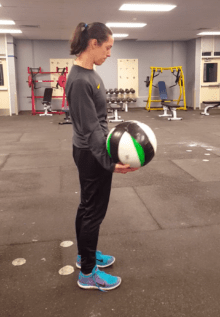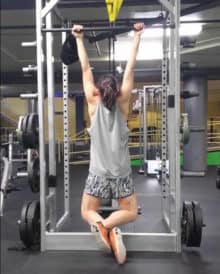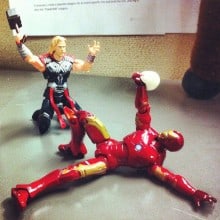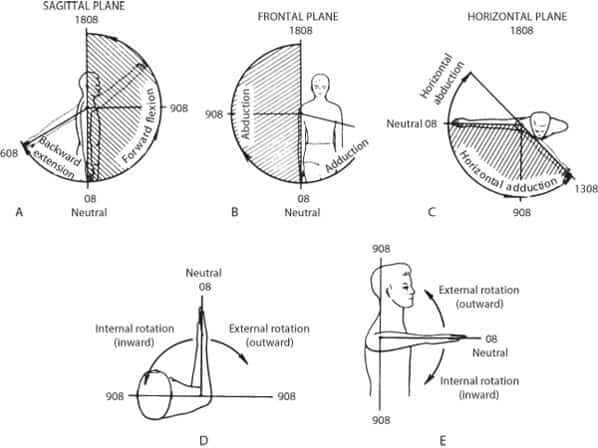To recap Part One: Create a sense of intrigue Provide multiple points of entry Establish pockets of safety Ask instead of assume This sh*t’s hard (which is why so few do it) After the weight shift lesson , three of… Read more ›
This post serves as a follow up to: A Path Towards Harm. Otherwise titled: The things I did wrong when I didn’t pay attention or have compassionate patience. The tag to this blog used to read, “fix yourself.” But… Read more ›
If something is stable, it can accept more than itself. Adding load then, signifies a sureness of support — a confidence in the structure of self. Though often treated as static, the load, structure, and interactive adaption to stress is… Read more ›
This is another concept coming from the astute observations of Nicole Uno. The medical, fitness, and wellness worlds are fixated on correcting imbalances. Amidst all the readily available treatment plans, too few remain curious about why so many asymmetries… Read more ›
Slings. I’ve heard them referred to often, but never quite knew what they were or why they were important. I understood that they were anatomically determined lines within the body, but in a structure that is fully connected, it didn’t… Read more ›
Cecily Milne is the mind behind yoga detour, movement education that encourages the yoga population to go beyond ‘nailing poses’. She immediately reminded me of Marlo Fisken – a “pole person” who’s actual draw is that she is a brilliant… Read more ›
When I got my first chin up, I felt superhuman. Finally hitting that relative strength benchmark felt like a magic trick I was somehow involved in. Even more mystifying, though, is that I had absolutely nothing on a pronated grip… Read more ›
Plagued by forward head posture and phone-down eyes, the act of tilting the head back can become unnerving. Used to being underutilized, the cervical spine has to be coaxed into believing extension can be a position of comfort. The shoulders,… Read more ›
In a top floor studio space that felt more like a cozy attic, I had a revelation. A soft-spoken yet commanding gal led me into my own body with an almost story-time cadence and tone. Knowing I was new, she… Read more ›
Movement overlaps. Brain work = joint work = speed, power, strength, and coordination work. We have structures and we have capacities. Our practice establishes the abilities of both. There is a general consensus that if your parts work better you’ll… Read more ›
We tend to move in ingrained patterns, within the same degrees and utilizing the same amount of space. Thinking bigger about what a joint is capable of doing allows us to use it in ways we don’t, which often aligns… Read more ›
Limitations in the wrist are the Achilles heel of push dominant training programs. Repeated gripping and hoisting of bars and bells turn the hands and wrists into one trick-ponies that get cranky when trying to press the body off the… Read more ›
The mobile nature of the shoulders leaves them vulnerable to influence. The way we consistently hold them is the way they’ll stay. Slouched postures slumped over desks or protecting their personal interest in cell phones and video game controllers adapt… Read more ›
featured photo credit: @movnat instagram (Carlos Condit) The ground is a safe, secure place. It is not something to be avoided or stepped lightly onto. It can easily absorb our falls and placements and pressures. If we become afraid… Read more ›
The one flaw in the Functional Range Conditioning system is its heavy use of acronyms. It has created a culture of separation, utilizing a language only understood within the context of the FRC group. Starting with CARs and developing into the… Read more ›
Controlled Articular Rotations (CARs) are the entrance point to Dr. Andreo Spina’s Functional Range Conditioning system: They are meant to: 1. assess joint health (particularly the function of the deep joint capsule) 2. maintain outer… Read more ›
Getting off and onto the ground is a skill that isn’t practiced by the larger population. We have chairs and beds that are soft and inviting. Babies spend most of their time on the floor, and they seem to have… Read more ›
The shoulder blades are an enigma to the joint-by-joint theory. They act as a mobile-stabilizer to everything connected to the thoracic cavity. The only comparable area is the pelvis, which connects the hips to the lower canister of the torso.… Read more ›
The shoulder and hip are ball-and-socket joints. Their usage, however, often gets thrown off by the hinge joints separating the thick and double bones that make up our limbs. The knees and elbows tend do most of the grunt work… Read more ›
In part 1 of this shoulder series, we looked at glenohumeral rotation in the horizontal plane (think shoulders back, chest forward). This post aims to look at its influence in the sagittal and frontal planes, as well as the adaptations that… Read more ›
The glenohumeral joint is a ball-and-socket that allows for all ranges to motion: flexion/extension, aBduction/aDduction, and internal/external rotation. photo credit: eletunk.com Like the hips, the rotary capacity of the shoulders is often overlooked. Sitting in poor posture for most of our… Read more ›
Anterior shoulder pain is often triggered by ‘excessive’ grip drive through the thumb and index finger. To specify the sites of pain I’m referring to, see spots 1, 2, or 4 on the picture below: photo credit: shoulderdoc.co.uk Why might… Read more ›
Seven tips to nailing that chin up. 1. The most shoulder friendly chin up grip is neutral, with palms facing each other. This differs from traditional chin ups (palms facing you) and pull ups, where your palms are facing away… Read more ›
The intricacies of the shoulder are crazy. Everything fits just right, in the tiniest of divots and crevasses and seams. The body is brilliant in its precise perfection. Just look at this thing: photo credit: athleticadvisor.com And then you add… Read more ›
Packing the shoulder refers to using the scapula to ‘suck’ the shoulder into place. You are securing the stable joint so the arm socket (glenohumeral joint) can move around it. Most people “unpack” the shoulder by pressing overhead. They… Read more ›
The “shoulder” is actually composed of three bones and their joints, the scapula or shoulder blade, the humerus (upper arm), and the clavicle (collar bone). photo credit: physioworks.com.au The scapula is a STABLE joint. The humerus (glenohumeral joint)… Read more ›
























